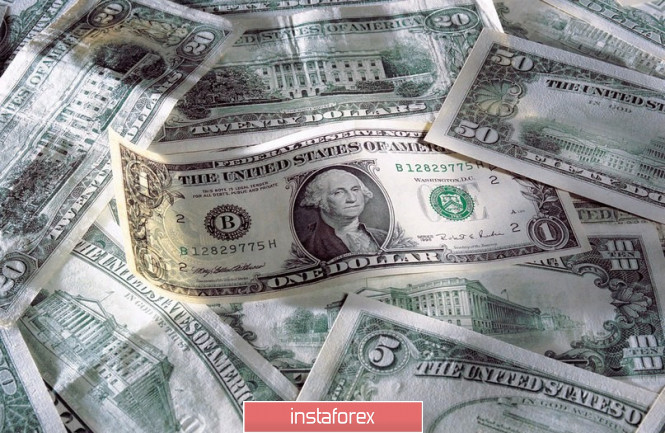
The USD index continues to update two-year highs, even despite the decision of the Federal Reserve to reduce the interest rate for the first time in 10 years and to stop the balance reduction process since August.
According to JPMorgan analysts, one should not be surprised at this kind of behavior from the US currency.
"The decision of the Fed on rates corresponded to the median forecast of economists, and now we are seeing a reaction in the spirit of "sell on rumors, buy on facts"," representatives of the financial institute noted.
"The rhetoric of the central bank was rather restrained and gave participants in the foreign exchange market the opportunity to recall that, in general, the level of interest rates in the US remains attractively high, and the situation in the global economy is tense," they added.
JPMorgan admits that the greenback may lose ground against currencies such as the yen and the franc in the future, but otherwise the potential for pulling down the US currency looks doubtful, especially in the case of the euro and the pound, therefore, bankers report that they refrain from any major "shorts" on the dollar.
The rate cut at the FOMC meeting in July by a quarter of a point was already taken into account in the quotes, and the key event was the speech of Fed Chairman Jerome Powell.
At a press conference, the Fed chief said that the regulator does not rule out further cuts in the federal funds rate, but does not consider its reduction from 2.5% to 2.25% as the beginning of a monetary policy easing cycle. In order for this to happen, the central bank must see the real weakness of the US economy.
The comments of the Fed Chairman can be interpreted as follows: if the statistical data on the United States worsens, the regulator will lower the rate, if not, raise it or keep a pause.
"Apparently, the Fed, considering its further actions, intends to track the incoming information. This is the same type of data dependency as it did when the Fed indicated in a statement that it would be "patient", "says Bipan Rai of the Canadian Imperial Bank of Commerce (CIBC).
According to the analyst, the main idea of the FOMC's July message is that the market should not be 100% certain of a reduction in the federal funds rate at the September meeting.
"It seems that the Fed has decided to insure itself in order not to give the market a false signal. If the tone of the regulator's statement was too bearish, then investors would get a signal to cut rates in September. In addition, it would be a reason to talk about the fact that the Fed already fears an economic slowdown at the moment," said B. Rai.
It should be noted that the decision that the market expected from the US central bank with a probability of 100% turned out to be difficult for the regulator and was not unanimous. Two members of the FOMC - Boston head of the Federal Reserve Bank Eric Rosengren and his colleague from Kansas City Esther George - voted to keep the interest rate unchanged.
"The split in the Fed is understandable. From a formal point of view, the US central bank has no reason to ease monetary policy. In the second quarter, GDP grew by 2.1%, and in the first half of the year - by 2.5%. At the same time, unemployment in the country has been at a low for more than half a century, core inflation (excluding energy and food prices) exceeds the target by 2% (2.1% in June), consumer confidence has reached its highest since November 2018" - said economist Moody's John Lonski.
Meanwhile, the market seriously counted, if not on the Fed's aggressive monetary expansion (rate cut by 50 basis points), then on the door opened by the regulator for further easing of monetary policy. However, the US central bank returned bidders from heaven to earth.
In response to the FOMC statement and comments by Jerome Powell, the single European currency exchange rate against the US dollar fell to its lowest level since May 2017.
However, from a fundamental point of view, the weakening of the euro against the greenback looks quite logical. The differential yield of US and German government bonds now plays in favor of the dollar, and the fact that economic growth in the eurozone slowed down by half in the second quarter puts pressure on the euro bulls. The US economy is clearly growing faster than the currency bloc's GDP.
If we assume that the Fed makes monetary policy decisions dependent on incoming data, then one of the catalysts for the change in the dollar exchange rate could be the US labor market report for July, which will be released tomorrow. It is assumed that the strong figures will allow EUR/USD bears to push the quotes to 1.09, and a weak result will bring the bulls to life.
The material has been provided by InstaForex Company - www.instaforex.com